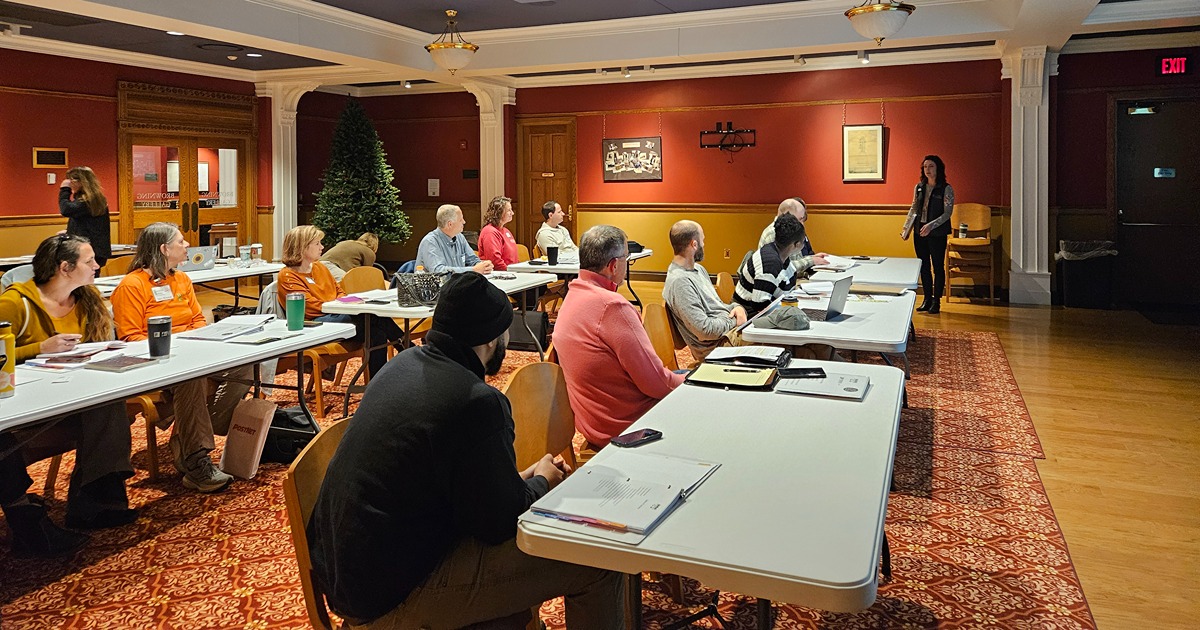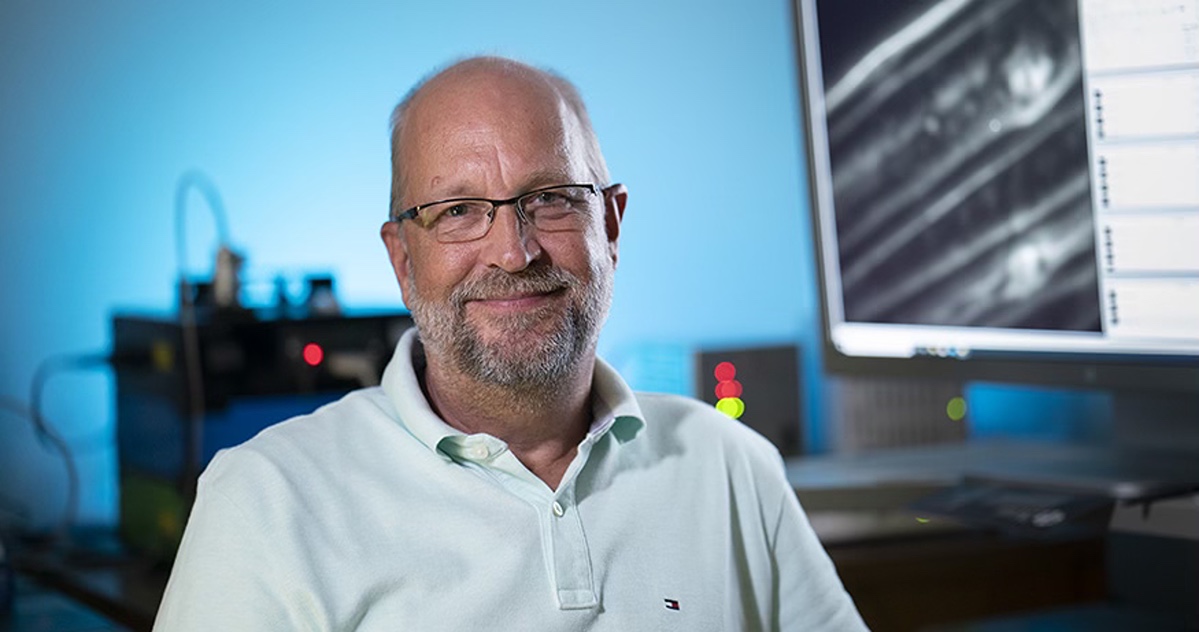Soil science expert creates framework to expand engagement in urban areas
 Anna Paltseva, clinical assistant professor of urban science in Purdue University’s Departments of Agronomy and Horticulture and Landscape Architecture (Purdue Agricultural Communications/Joshua Clark)
Anna Paltseva, clinical assistant professor of urban science in Purdue University’s Departments of Agronomy and Horticulture and Landscape Architecture (Purdue Agricultural Communications/Joshua Clark) Scientists, communities encouraged to collaborate to improve city spaces
WEST LAFAYETTE, Ind. — Urban soils are essential to building sustainable cities — from supporting green infrastructure and food production to regulating water and enhancing climate resilience. However, they are heavily impacted by human activity and often contain elevated levels of heavy metals due to their proximity to roads, buildings and industrial areas. These complexities not only pose significant public health risks, they hinder scientific research and policy development, emphasizing the urgent need for accessible, community-driven strategies.
“It’s important to build accessible public education around urban soil science. While there’s plenty of information on soil science in agriculture and at universities like Purdue, there’s a lack of accessible resources for urban spaces. Home gardeners and everyday people without a background in science or agriculture are often left without simplified tools to understand urban soils,” said Anna Paltseva, clinical assistant professor of urban science in Purdue University’s Departments of Agronomy and Horticulture and Landscape Architecture. She is a leader in efforts to address urban soil contamination and promote environmental justice through participatory science.
With most urban soil contamination found in the topsoil, the ground may once have been a gas station or industrial site. There could be lingering residues like gasoline emissions or lead from deteriorating paint on nearby buildings. During dry seasons, particularly in the summer, bare soil can release harmful particles into the air. In home gardens, this soil can cling to clothing and shoes, easily being tracked indoors and increasing the risk of exposure.
“Urban soil often contains different pollutants, so it’s important to understand the possible exposure risk, especially when people grow food in their yards or when children play with bare soil. Lead is one of the most prevalent metals we are studying because it affects the cognitive development of children — it’s a neurotoxin and one that doesn’t move in soil,” Paltseva said. “That’s why it’s critical to identify contaminants in soil and their distribution, so we can address hot spots and remediate them.”
Recognizing the growing demand for accessible soil science resources in urban spaces, Paltseva developed the Urban Soils Guide, a practical field and lab manual designed for students and beginner gardeners. Available through Springer, the guide features interactive activities covering foundational topics like soil formation, texture, water retention, pH levels, contamination risks, plant health and biological activity. The Urban Soils Guide raises public awareness and provides communities with tools and easy-to-follow tips for nurturing healthier urban environments.
Paltseva’s latest article, “Participatory science in urban soil research,” introduces a topic not covered by the Urban Soils Guide: the role of community engagement. It outlines a framework for overcoming challenges and expanding public engagement in urban soil research.
In this framework, scientists and communities are encouraged to collaborate through codesigned research projects, educational outreach and simplified data collection methods to enhance both public understanding and scientific accuracy. By integrating digital tools and real-time mapping, the framework strengthens data precision while promoting environmental stewardship. Ultimately, it builds long-term, mutually beneficial relationships between scientists and communities, where shared knowledge and action lead to strengthened urban soil stewardship.
“This article showcases successful cases of projects around the world, demonstrating how scientists work with urban communities and how we can adopt citizen science projects to improve urban spaces,” Paltseva said. “I also discuss the challenges we face and how we can leverage scientific research, technological support and policy advocacy to improve urban soil health. Additionally, I provide practical recommendations on how we can better engage communities, increase their interest in soil science, educate them and collect data at the same time.”
Paltseva’s fascination with participatory science began in 2011 when she moved to New York City and was struck by the sheer number of community gardens. During her PhD studies at City University of New York Graduate Center, she was frequently approached by residents asking for soil testing and remediation advice. These experiences expanded her research to include field experiments in community gardens and suburban farms — efforts that required close collaboration.
In 2021, she founded the Delta Urban Soil Lab at the University of Louisiana at Lafayette, where she continued her work testing soil for local communities. She partnered with neighborhood leaders and encouraged her students to collect soil samples from their homes, as well as those of friends and family, to broaden community participation and deepen the impact of her research.
“I hope my framework will go beyond soil science,” Paltseva said. “There might be other scientists who are interested in engaging with communities, as well as organizations that are working toward sustainability, resilient communities and organizational gardens development. I believe they’ll find this perspective beneficial, especially professionals working in urban agriculture and those looking to collaborate with residents to improve urban spaces.”
About Purdue Agriculture
Purdue University’s College of Agriculture is one of the world’s leading colleges of agricultural, food, life and natural resource sciences. The college is committed to preparing students to make a difference in whatever careers they pursue; stretching the frontiers of science to discover solutions to some of our most pressing global, regional and local challenges; and, through Purdue Extension and other engagement programs, educating the people of Indiana, the nation and the world to improve their lives and livelihoods. To learn more about Purdue Agriculture, visit this site.
About Purdue University
Purdue University is a public research university leading with excellence at scale. Ranked among top 10 public universities in the United States, Purdue discovers, disseminates and deploys knowledge with a quality and at a scale second to none. More than 106,000 students study at Purdue across multiple campuses, locations and modalities, including more than 57,000 at our main campus locations in West Lafayette and Indianapolis. Committed to affordability and accessibility, Purdue’s main campus has frozen tuition 14 years in a row. See how Purdue never stops in the persistent pursuit of the next giant leap — including its integrated, comprehensive Indianapolis urban expansion; the Mitch Daniels School of Business; Purdue Computes; and the One Health initiative — at https://www.purdue.edu/president/strategic-initiatives.
Media contact: Devyn Ashlea Raver, draver@purdue.edu
Sources: Anna Paltseva, apaltsev@purdue.edu
Agricultural Communications: Maureen Manier, mmanier@purdue.edu, 765-494-8415
This research is a part of Purdue’s presidential One Health initiative, which involves research at the intersection of human, animal and plant health and well-being.



